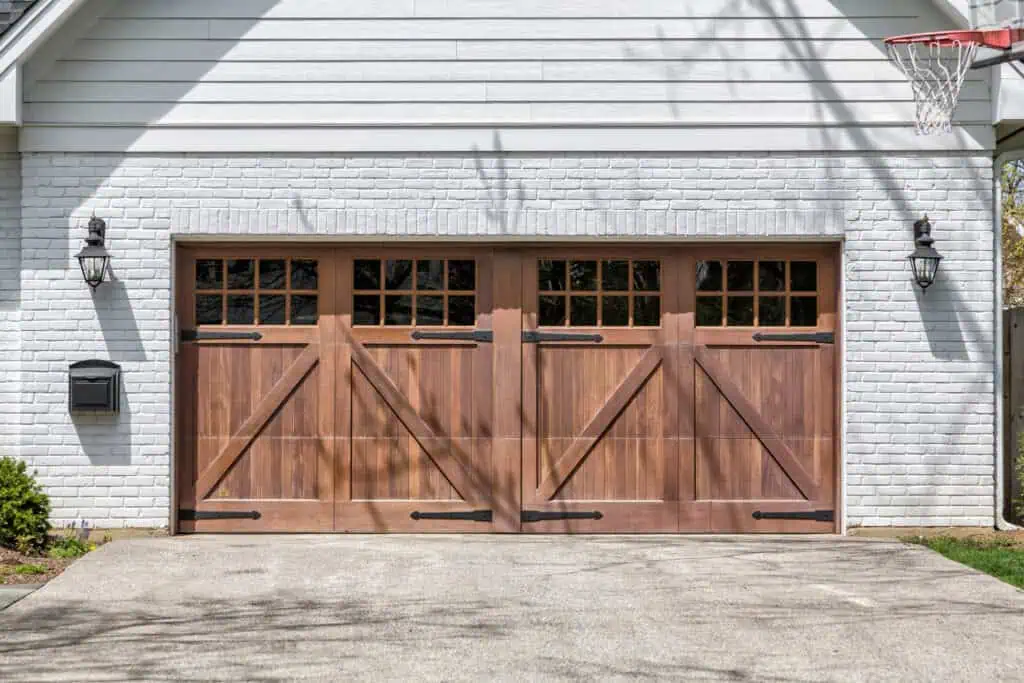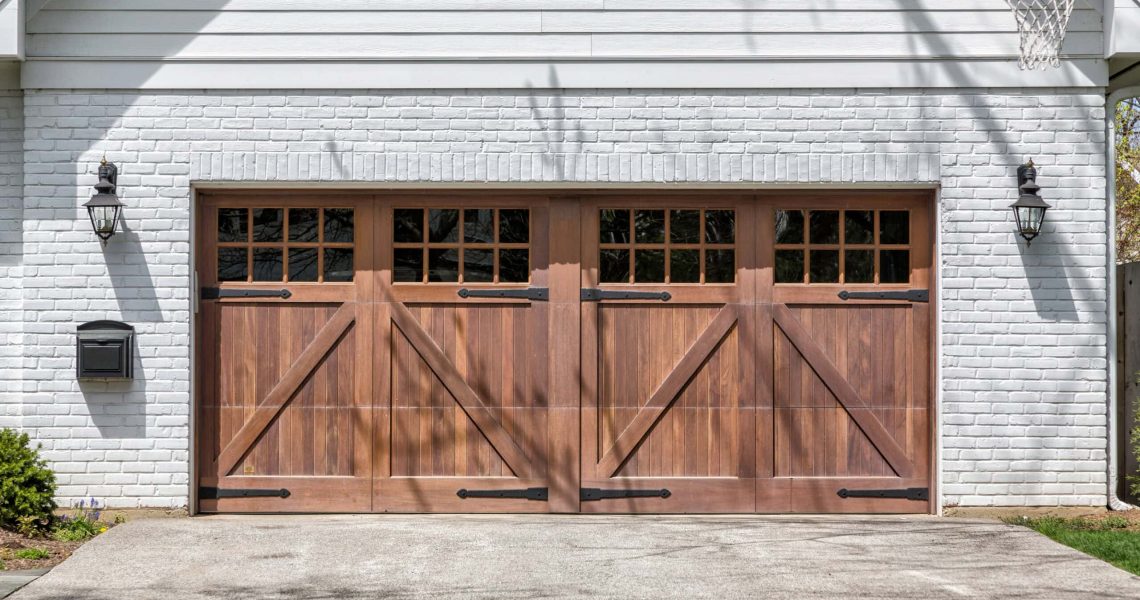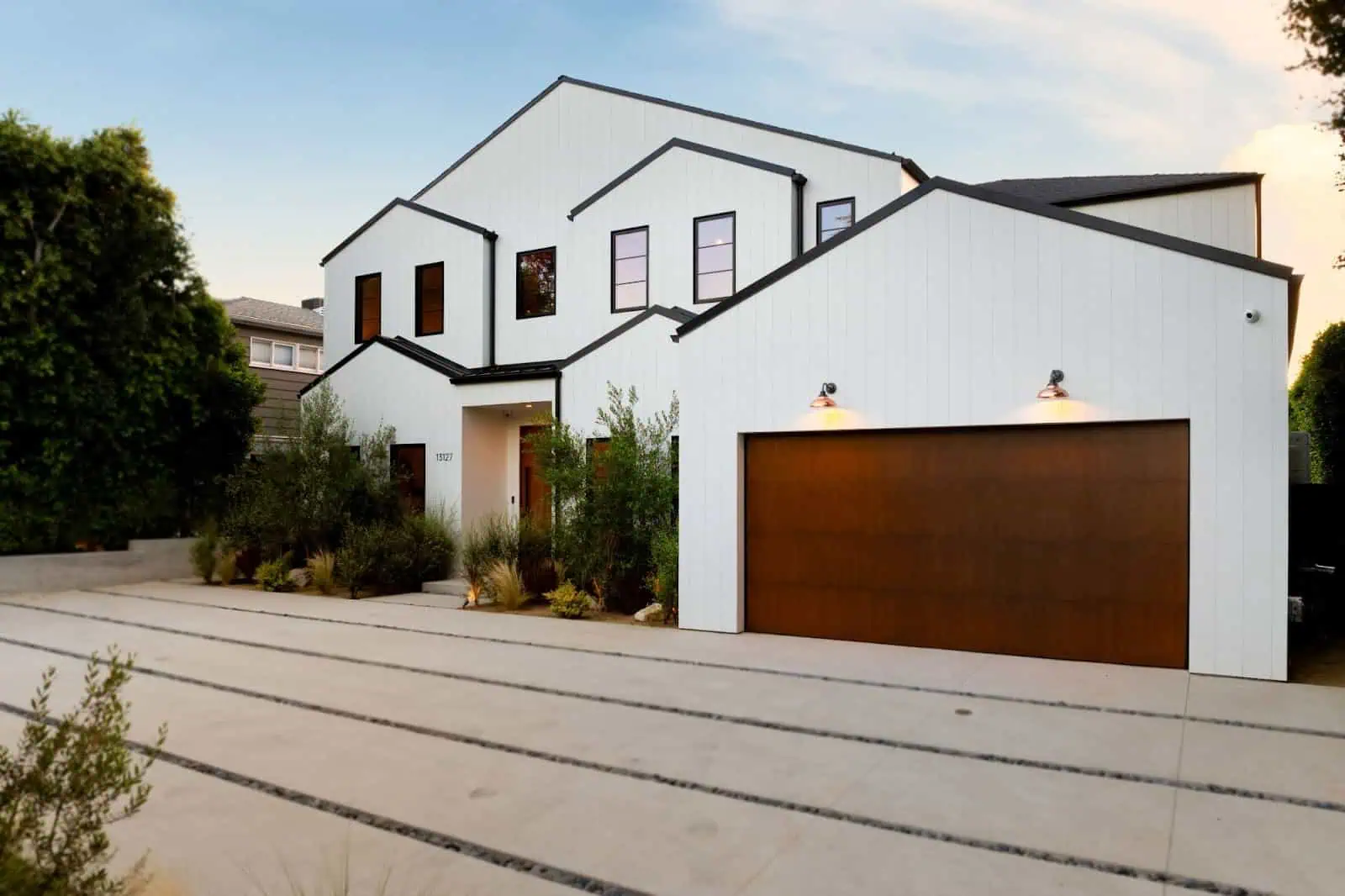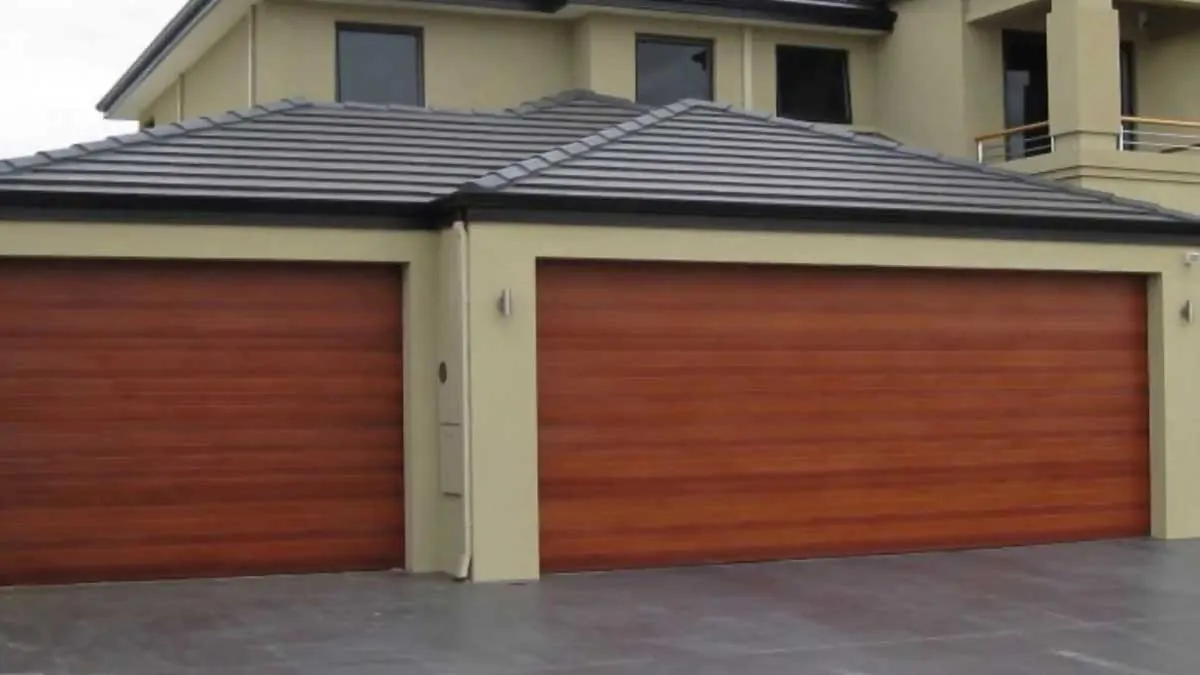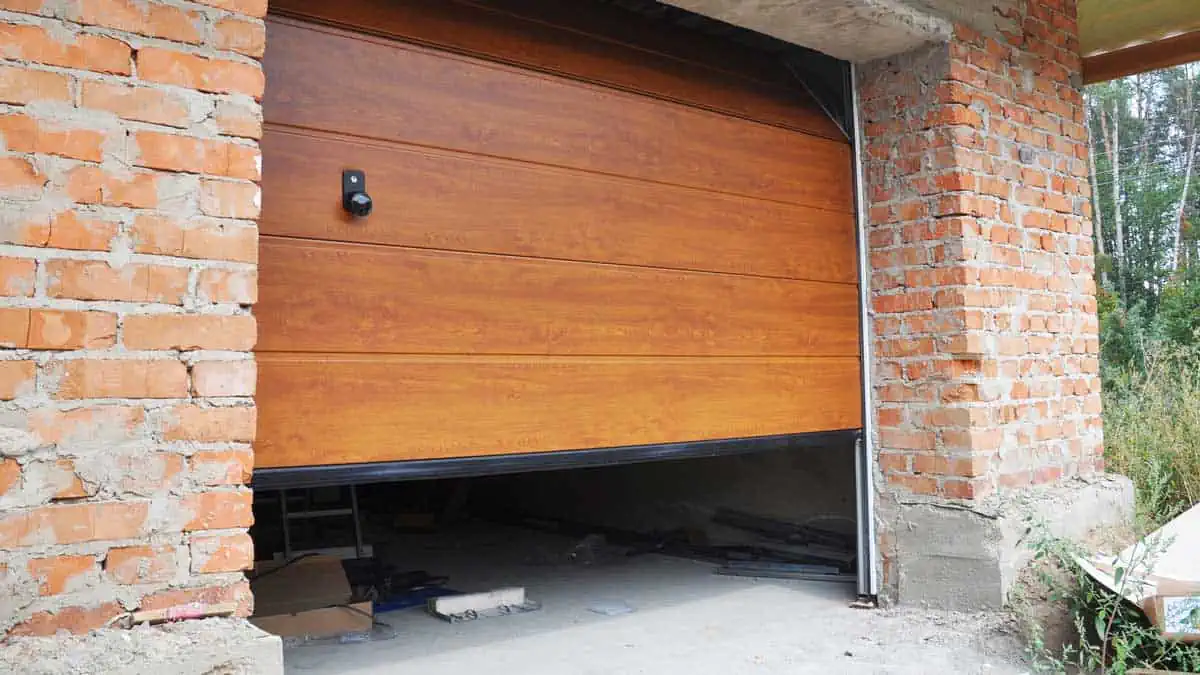Garage doors are an important investment. Besides providing convenient access to your car, garage doors also have a significant effect on security, curb appeal, and energy efficiency. A high-quality door can even increase your home’s resale value! So whether you’re building a new house or upgrading an existing one, choosing the right garage door makes a big difference.
But with so many styles, materials, and options available, finding the right door may seem daunting. To simplify the process, we’ll walk you through the basic features step-by-step, from operation and insulation to wind load and safety, to help you find the perfect garage door for your home.
Size
Before choosing a garage door, determine how big it needs to be. Single-car garages normally require doors 7-8 feet tall and 8-9 feet wide, while double-car garages need to be 16 feet wide. However, it’s a mistake to assume every garage is built to standard specifications. Measuring your doorframe will tell you whether you can purchase a standard door or if you’ll have to order a custom-size door instead.
Besides measuring height and width, you’ll need to account for guide tracks, ceiling tracks, and springs. In order to provide a tight seal, garage doors need to overlap the opening by one or two inches. You’ll also need at least 4-6 inches on either side to accommodate the tracks and twelve inches above the door to accommodate the springs.
Most homeowners install torsion springs, due to their extended lifespan. However, extension springs cost less and only require ten inches of headroom. Finally, measure the backroom, the free space along the ceiling behind the door. In order to fully retract, most doors need backroom equivalent to their height plus 18 inches.
Materials
Nothing affects cost and lifespan more than construction material. There are six different types of materials to choose from when purchasing a garage door.
- Vinyl. Vinyl doors are weatherproof, making them a good option for homeowners looking for an inexpensive option with low maintenance costs. They don’t rot, rust, or warp and are virtually immune to insects. They’re also impact resistant and because their color is built into the material, they don’t fade, even in direct sunlight.
- Fiberglass. Fiberglass is highly resistant to moisture and humidity, making it a good choice for wet or coastal areas. Its tough exterior is capable of enduring impacts and frequent cycling without denting or cracking.
- Aluminum. Aluminum doors often feature large tempered glass or acrylic panels set in anodized frames, making them a great choice for homeowners looking for a sleek, modern aesthetic. Anodization allows the doors to operate in humid conditions with minimal issues.
- Steel. Heavy gauge steel is a strong, low-maintenance option suitable for all homes and environments. Steel garage doors are extremely durable, allowing them to operate for years without any issue.
- Wood. Made from moisture-resistant cedar, redwood, or cypress trees, wooden garage doors provide a classic, sophisticated look that complements nearly every architectural style. With proper care, they can last for decades, even in harsh weather.
- Wood Composite. Made from wood fibers and weatherproof resins, composite doors resist warping, rotting, and cracking better than natural wood, without frequent staining and sealing. Their lightweight design also reduces the burden on the opener and guide tracks.
Style
Choosing a style that blends seamlessly with your existing architecture is one of the fastest and easiest ways to improve your home’s curb appeal. While manufacturers can custom build doors to any specifications, most homeowners choose variations based on one of four designs.
- Traditional. The most popular garage door style in America, characterized by symmetrical, raised rectangular panels that create repeating vertical and horizontal patterns along the door’s surface.
- Modern. Combining glass, metal, steel, and even wood, these doors embrace minimalist aesthetics to enhance contemporary and mid-century homes, with clean lines and large glass windows.
- Carriage-House. Sometimes referred to as “barn-style garage doors,” these doors mimic the rustic look of vintage farmhouses, often found in country-style or mission-style homes.
- Craftsman. Known for their simple design, clean lines, and handcrafted appearance, these doors are traditionally painted or stained in warm, natural colors that emphasize their rugged aesthetic.
Modern fabrication techniques allow builders to craft doors in any style you want, from practically any type of material. Even doors that look like they were carved from solid oak are often made from vinyl, steel, or fiberglass instead.
Finish
Manufacturers can custom mix paint to create any color you want. They can even create artificial woodgrains practically indistinguishable from the real thing. Most designers recommend choosing a color that contrasts with your home exterior, to help it stand out and provide visual depth. Just remember to avoid blending warm tones with cool ones, which clash rather than complement one another. Matching your front door and garage door is a popular way to harmonize the different sections of your house, reinforcing its charm.
Windows
Windows break up solid surfaces and give doors a stylish, upscale appearance. They also create openings for natural light, which reduces the need for artificial lighting and makes your garage more inviting. While many homeowners opt for clear glass, tinted, frosted, and glue chip options are available to prevent strangers from peeking inside.
Hardware
Besides windows, there are a mix of optional components you can add to your door, such as hinges, handles, brackets, and decorative nail studs. Though rarely used in modern styles, they’re a great way to enhance the cozy aesthetic of craftsman and carriage-house doors.
Insulation
Garage doors are typically the largest opening in your home. In some cases, they comprise thirty or forty percent of the front façade. As a result, they have a major effect on climate systems, especially if they’re adjacent to your main living space. Uninsulated doors lead to energy loss, driving up heating and cooling costs.
Purchasing an insulated door helps control energy costs. It not only reduces the strain on your furnace and air conditioner; it also stabilizes temperatures inside your garage, making it a comfortable place to spend time and indulge your hobbies. For regions that experience significant temperature swings, insulation also protects anything stored inside your garage, which might be damaged by thermal expansion and contraction.
Insulation is measured in R-value. The higher the value, the more it restricts heat flow. The value you need is generally determined by location. Insulation raises the cost of your doors, so homes in moderate climates won’t save much by purchasing one with a high R-value, while homes in extreme climates will. Likewise, people with a detached garage probably don’t require much insulation either, particularly if they only use it to store their car.
Operation
Not every door opens the same way. You want one that’s convenient, accessible, and fits the available space, which includes both your garage and your driveway. Homeowners purchasing a new garage door have five options to choose from.
- Sectional. By far the most popular choice for residential buildings. These types of overhead doors are made of interlocking slats that slide up and stack along the ceiling.
- Canopy. An up and over door that swings out then tilts up parallel to the ceiling, with the bottom extending out beyond the edge of the frame, shading the ground in front of your garage.
- Retractable. Similar to a canopy door, except this model slots back fully along the ceiling. May be impractical on steep driveways, as the bottom often scrapes the ground as it opens.
- Swing. These doors open outward from a central split, like French doors. Because they are hard to automate, these doors are normally found in rustic homes or garages with low headroom.
- Roll-Up. Designed to wrap around a coil above the door opening, these are a common feature in commercial or industrial settings. However, they’re occasionally installed in private homes as well. They’re strong, fast, and convenient, though because of their utilitarian design, they’re normally found in modern homes rather than vintage ones.
Wind Load
Because of their large surface area, garage doors frequently catch the wind. Unless properly reinforced, they can easily buckle during a severe storm. In a worst case scenario, a door breach can lead to a buildup of air pressure that causes the roof and walls to collapse. To protect residents, cities in vulnerable areas normally pass building regulations that prohibit doors unable withstand a minimum level of wind resistance.
Though wind-rated doors are costlier, their reinforced struts and springs are housed inside the garage, so they have no effect on curb appeal. If you don’t know what type of wind-ratings are required in your area, consult your city planning office or our Vortex Doors of Tampa team.
Safety Features
Though not a safety hazard, garage doors can cause accidents. Pinched fingers are the most common, but homeowners are occasionally caught beneath a closing door, which can lead to more serious injury. Fortunately, these types of accidents are increasingly rare, thanks to an array of built-in safety features, such as:
- Auto-Reverse Systems. Infrared sensors near the bottom of the door detect if there’s a person or object in the door’s path. If an obstacle is detected, the sensors automatically reverse the door to prevent accidents.
- Manual Release Handles. Allow you to raise or lower the garage door by hand, in the event of a power outage.
- Motion Detection Lighting. Activate the lights outside your garage whenever there is someone or something moving about. Improved visibility reduces your risk of tripping and falling, while also ensuring a clear line of sight when driving in or backing out.
Families with small children should also ask about pinch-resistant panels, which prevent fingers from getting caught. As the door closes, the curved or overlapping sections push objects out of the way rather than trapping them inside.
Openers
Like garage doors, garage door openers are not one size fits all. There are several types to consider, each with their own advantages.
- Belt Drive Openers. Open doors with steel-reinforced rubber belts. One of the quietest models on the market, they’re a good choice for homes with attached garages. However, their sophisticated components increase purchase cost and they often require regular maintenance in order to function in humid areas.
- Chain Drive Openers. Raise and lower your garage door with a thick chain, similar to a bicycle chain. Strong, affordable, and long-lasting, they’re one of the most popular choices for residential settings. Noisy compared to other models, they have a bulky motor that may not be suited to spaces with low ceilings.
- Screw Drive Openers. These systems provide quick access to your garage, compared to belt and chain openers. Their compact design allows them to function in tight spaces, while their solid screw mechanism resists wear and temperature fluctuations. One of the most expensive models on the market, their durability makes them a good, low-maintenance choice for homes in harsh environments.
- Wall Mount Openers. Installed on either side of the garage opening, these systems control your door with a tension spring, rope, and pulley system. Quiet, durable, and compact, these units save ceiling space and leave more room for tall vehicles. Because they have fewer moving parts compared to other units, their maintenance costs tend to be low. Unfortunately, their upfront costs are relatively high.
Many modern openers are Wi-Fi enabled, allowing you to control and monitor your doors from anyplace with a stable internet connection. Rather than purchase a physical remote, you can operate your doors through your smartphone instead.
Help Finding the Right Garage Door
Vortex Doors of Tampa supplies top-quality doors to homeowners up and down the Gulf Coast. With over 100 years of combined experience, our experts provide critical support throughout the entire process. We offer a wide selection of doors from some of the world’s top manufacturers, custom fit to your exact specifications.
Besides answering your questions, our team also oversees delivery, installation, and maintenance, in order to ensure smooth operation and optimal performance. Contact us today for more information about transforming your home with a new door!
